The last airshow of 2021 is over. The Christmas holidays are beginning to dominate everyone’s calendar. Yet recreational pilots — being enthusiastic aviators — are thinking about flying in 2022.
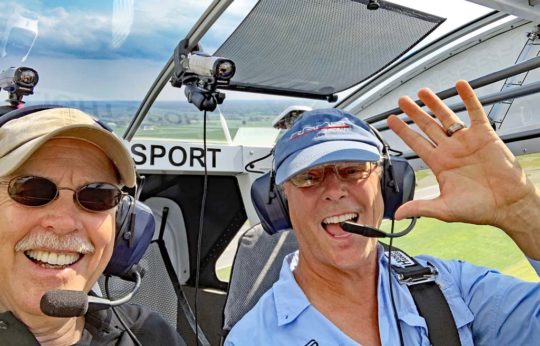 The Covid pandemic of 2020/2021 appears not to have slowed enjoyment of flying for fun… for most of us anyway. I sincerely regret anyone who suffered during this period but sport aviation has held up surprisingly well.
The Covid pandemic of 2020/2021 appears not to have slowed enjoyment of flying for fun… for most of us anyway. I sincerely regret anyone who suffered during this period but sport aviation has held up surprisingly well.
In this article, I will tackle a couple reader questions, the sort I hear all the time. To answer several people with one response, I asked reader John Joyce if I could use his question and name. He consented, so here we go…
Buyers Without Remorse
John started, “Skyleader 600 looks like a great aircraft. I had actually just noticed this model a couple days ago because there is a used one listed for sale on the Web. As a potential first time buyer, I would be interested to have you address the question of service for these smaller manufacturers.
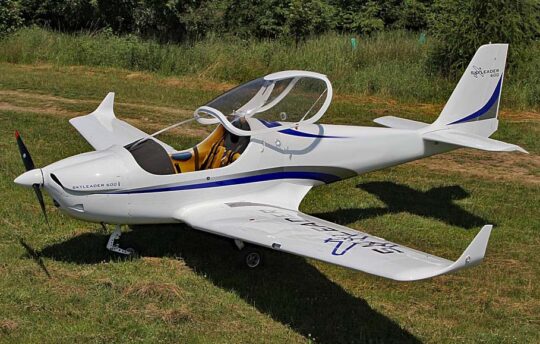 “By way of example,” John continued, “there are nearly 300 SportCruisers registered in the US, as well as nearly 350 Flight Design models, but only 3 Skyleaders. I’m not picking on Skyleader; there are many manufacturers with just two, five or 20 registrations in the database.”
“By way of example,” John continued, “there are nearly 300 SportCruisers registered in the US, as well as nearly 350 Flight Design models, but only 3 Skyleaders. I’m not picking on Skyleader; there are many manufacturers with just two, five or 20 registrations in the database.”
Matter of fact, our N-number database is another useful reference we offer. You can use the ByDanJohnson.com Tableau Public link to find every single LSA in the U.S. registry (you’ll have to drill down a bit, but here’s an infographic on how to do that).
John continued, “I imagine it’s easier to find a mechanic who is familiar with something that has hundreds of units in operation, rather than just a few. If I want to buy a less common aircraft, do I have to think about availability of qualified service ahead of time? Do I need to locate a mechanic first, even before settling on a particular model? I’ve never owned an airplane before, so this is a big unknown for me.”
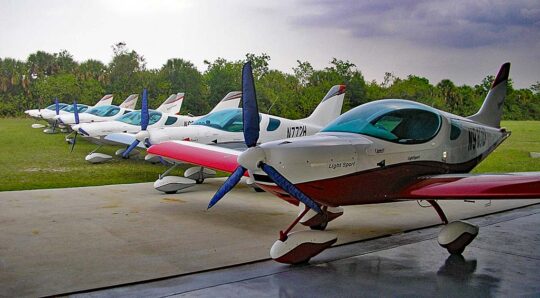
A line of SportCruisers, sold today by Cruiser Aircraft. The model was briefly known as PiperSport.
John didn’t ask about insurance but that’s another large question, especially these days for pilots over 70 years old. I recently interviewed on video one of the leading insurance agents, A.I.R.’s Gregg Ellsworth to get the latest info on that important topic.
Regarding mechanics — If a LSA uses all-metal construction, you can find capable mechanics almost anywhere. If your dream plane is largely composite, finding a mechanic can be much harder. The larger companies like Flight Design, building their CT series from almost all carbon fiber offer varying levels of training. If a dealer or mechanical shop obtains factory training — as does Airtime Aviation, the largest seller for Flight Design anywhere in the world — their people can fix anything and may be able and willing to work on other brands.
In the LSA world, the manufacturer dictates who gets to work on their airplanes so it’s best to go direct to the source to learn the availability of qualified mechanics. You can find nearly any LSA company using our SLSA List (loaded with links).
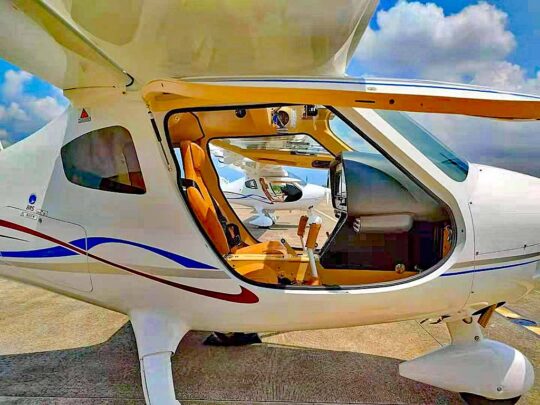
Light-Sport Aircraft are not simply a U.S. phenomenon. This view shows the interiors of a line of CTLS aircraft built by AeroJones serving the Asia-Pacific market.
If your dream LSA uses a Rotax engine, you will have little trouble getting service because the big Austrian powerplant manufacturer has trained hundreds of mechanics.
Continental-powered LSA can also be maintained by many Airframe & Powerplant (A&P) mechanics, virtually anywhere in the world.
Jabiru engines are maintained by Arion Aircraft (also producer of the Lightning-series of kit-built or fully-built SLSA aircraft). As Jabiru engines were designed to be simple to facilitate repair, any A&P can also work on them.
Other engines may be more challenging but all have some service centers, though perhaps not close to you.
Some LSA organizations have focused on providing service to many brands. One such is U.S. Sport Planes located in the north Dallas, Texas metropolitan area. Run by Scott Severen — the North American Jabiru importer — U.S. Sport Planes has a long history of working with numerous brands.
Others offer similarly broad service, such as Aero Adventure, which can work on multiple seaplane brands. My best advice is to contact the manufacturer or the importer of the aircraft that interests you and ask who can assist you closer to home.
Please remember, though, that LSA suppliers or mechanics aren’t McDonalds restaurants you can find everywhere. They are all specialized service providers. You may need to travel to them but as they are experts, it may be worthwhile to engage them versus a general A&P who may not know your particular airplane. Even after 17 years, LSA are still the “new kids on the block” so some mechanics may not wish to service them.
What IS Affordable?
Another reader, Dan E., made other comments I frequently hear. He wrote, “The definition of what people consider ‘affordable’ varies widely.” Not only does it vary by every individual; it can change depending on many other circumstances.
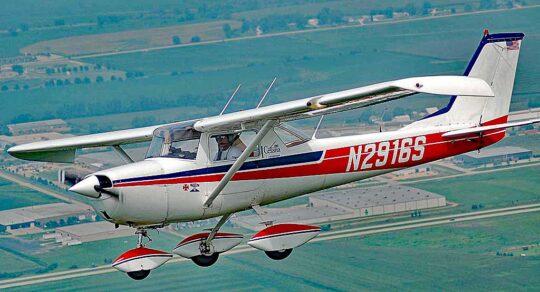
A vintage Cessna 150 in flight. Thousands are available at modest prices. They could qualify to be flown using a Sport Pilot certificate in 2024.
“For me,” Dan wrote, “a used $35K Cessna 150 or a $45K Piper Cherokee 140 are affordable, but a new $150-200K two-seat SLSA is not, and I have neither the time nor the interest to build my own ELSA.”
In truth, an ELSA (Experimental LSA) typically will not save much but can bring some other advantages. To save a more significant amount of money, you’ll need to build an Experimental Amateur Built (“51% rule”) aircraft. This will take a bigger investment of your time, but with the coming MOSAIC regulation professional builder-assist centers are expected to expand notably.
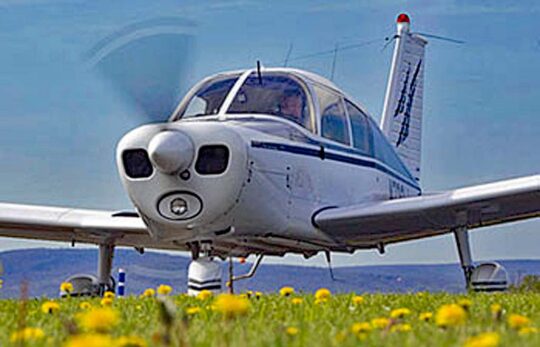
Lots of Piper Cherokee models are also available. Get a qualified mechanic to look one over carefully before buying; some have “colorful” histories.
Dan finished, “I thought that making entry-level planes more affordable through mass production to get more pilots flying was the original purpose of the LSA movement? What we ended up is a bunch of boutique manufacturers, each offering SLSA that appeal to someone who might otherwise buy a sportscar in the same price range.”
The truth is lots of people had expectations about the Sport Pilot/Light-Sport Aircraft regulation introduced in September 2004. “Mass production” was never one of the goals.
Likewise, some membership organizations expected a huge new wave of pilots that would join their organizations. That was not a realistic assumption, either. What we did get was a simpler pilot certificate with no medical exam required and a profusion of aircraft of many types. When the choices are many, the suppliers may be smaller. In fact, I have often used Dan E’s term “boutique manufacturer” and I still think that is appropriate.
Since Sport Pilot/Light-Sport Aircraft was introduced, we got 156 new models and we now have many good used LSA, often with just a few hundred hours on them. If you look long enough, I’m confident you can find something worthwhile, and you can find somebody to keep it maintained for you. A central goal of ByDanJohnson.com is to help you find them.
Can Anyone Help?
The good news? — After 17 years of Light-Sport Aircraft, a nationwide — even a worldwide — network of aircraft sellers, maintenance centers, flight schools, and builder-assist centers are available. You can can look throughout this website by using our Advanced Search to find them. Keep in mind you may need to travel to find the right airplane or the right mechanic.
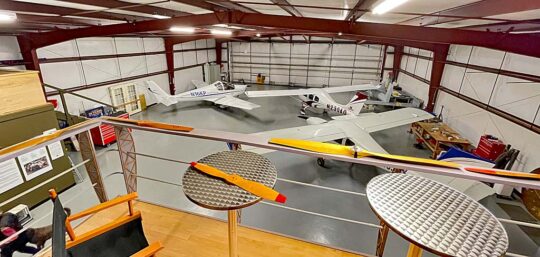
This is U.S. Sport Planes based in Denton, Texas (DTO). Aviation. Curiously, that’s a Kappa KP5 in the front left, the predecessor to the Skyleader that started this article. They are prepping it for a new customer, perhaps you?
I cannot personally address every inquiry but you can find most enterprises using the resources on this website. For many years, one of our most-used features is the SLSA List, which is filled with links. Using it will work better than most search engines.
Finally, in the age of social media, many aircraft types have a Facebook group that caters to that brand. Pilots who own the aircraft of your dreams can be very helpful in finding good purchases or good mechanics. Of course just because you “read it on the Internet” doesn’t mean a fact is true. Please seek out second (or more) opinions before buying and before engaging a mechanic. The better companies will get great reviews from their customers.
Good luck and tail winds, everyone! Fly safely and often.
Here are some vintage videos showing what may now be used Light-Sport Aircraft. Visit Dave Loveman‘s Light Sport and Ultralight Flyer YouTube channel for hundreds more.
And, here’s a whole playlist of very affordable Light-Sport Aircraft aircraft… (28 short videos).



What a terrific topic to explore! Thank you for delving into the issues beyond purchase.
In the paragraph discussing largely composite aircraft and carbon fiber: “….finding a mechanic can be much harder.“ There is a difference in the composite world between Carbon and Kevlar, and Fiberglass. Carbon and Kevlar require more attention in handling and storage before and during application. Common cutting tools are quickly worn processing the materials. Carbon and Kevlar both require very specific lay-up techniques to achieve their full potential.
Everything in design and manufacture is a trade off. In this case, the carbon planes are trading light weight and strength over material and manufacturing costs and complexity. These planes are very elegant.
Fiberglass is a bit heavier to get the same strength, with reduced manufacturing costs and complexity. Another type of elegance! One of the reasons Jabiru and other fiberglass aircraft choose fiberglass over carbon is because it is comparatively easy to work with, achieving equivalent strength with simpler processes, particularly in low production volume environments. The same fiberglass technology and processes are used in boat building and many industrial and commercial applications. The point being, fiberglass manufacturing and repair is very accessible. It is not uncommon for a GA shop to make a repair on a fiberglass part, for example, a fairing, for a GA aircraft.
Engines – Circling back around to the “simple and easy” concept. The Jabiru engine is designed to be straightforward – reasonably economical to manufacture (in comparatively low production numbers) and simple to maintain. It is designed to be serviced without specialized manufacturer required training, and serviced with common tools – tools that would be in any A&P’s tool box. Any A&P or LSRM mechanic can work on the Jabiru engine by following the manuals (maintenance, technical and overhaul) all available on-line, at no charge. Understanding this, it seems a fair statement that, like Continental, Jabiru engines can (and are) maintained by many A&P mechanics.
Thanks again for getting into the “nuts and bolts’ of flying!
Thanks for a batch of very useful information, Scott!